Sometimes, the most pastoral landscapes can reveal some of nature’s wildest secrets. Case in point: the refined Cotswold Hills in England.
Amid tidy country homes and winding lanes, grand country estates and traditional pubs, the serene natural beauty of the region unveils a quieter sort of adventure than we might expect in, say, Iceland or the Arctic. Far from the urban jungle, we find wildlife native to Great Britain, from roe deer to badgers, hedgehogs to peregrine falcons.
(function(d,u,ac){var s=d.createElement(‘script’);s.type=’text/javascript’;s.src=’https://a.omappapi.com/app/js/api.min.js’;s.async=true;s.dataset.user=u;s.dataset.campaign=ac;d.getElementsByTagName(‘head’)[0].appendChild(s);})(document,123366,’uifl1zoju5dzvy98iikn’);
What Wildlife Will I See in the Cotswolds?
What wildlife can you expect to see on a Nat Hab adventure in the Cotswolds? Your wanderings will take you along scenic footpaths through Britain’s largest Area of Outstanding Natural Beauty, through the ancient habitats of English animals. Your focus will be on pristine wildlife and conservation efforts in the country’s largest designated National Landscape. Along hedgerows and trout-filled streams, beech forest and wildflower meadows, you’ll find yourself face to face with kingfishers, tufted ducks, foxes, greater horseshoe bats and more.
Although this is an admittedly more genteel way to experience wildlife than on an African safari, for example, the picture-postcard villages, delightful inns and exuberant gardens make for memorable moments in their own right. Plus, when you travel in the Cotswolds, you’ll have the opportunity for exclusive castle and estate tours (think Highgrove House, the royal estate of King Charles), picnic lunches along hidden byways and pints at local pubs that date back centuries.
Notice, too, the Cotswolds region’s inspiring commitment to nature, wildlife and conservation. The people living and farming in this area have been doing so for 6,000 years, and their love for their land is apparent. While the British wildlife may be subtle, it’s dearly protected by the locals.
This is but a small subset of the British wildlife you might encounter on our Cotswolds tour:
Eurasian Badgers
You’ll find these playful, expert foragers just about everywhere you wander in the Cotswolds. They rule the woodlands, often living where their large clans have lived for generations. Look for their well-trodden paths through the undergrowth of the forest. They’re quite distinctive as far as United Kingdom animals go, with their recognizable black and white-striped face, gray fur and short furry tail.
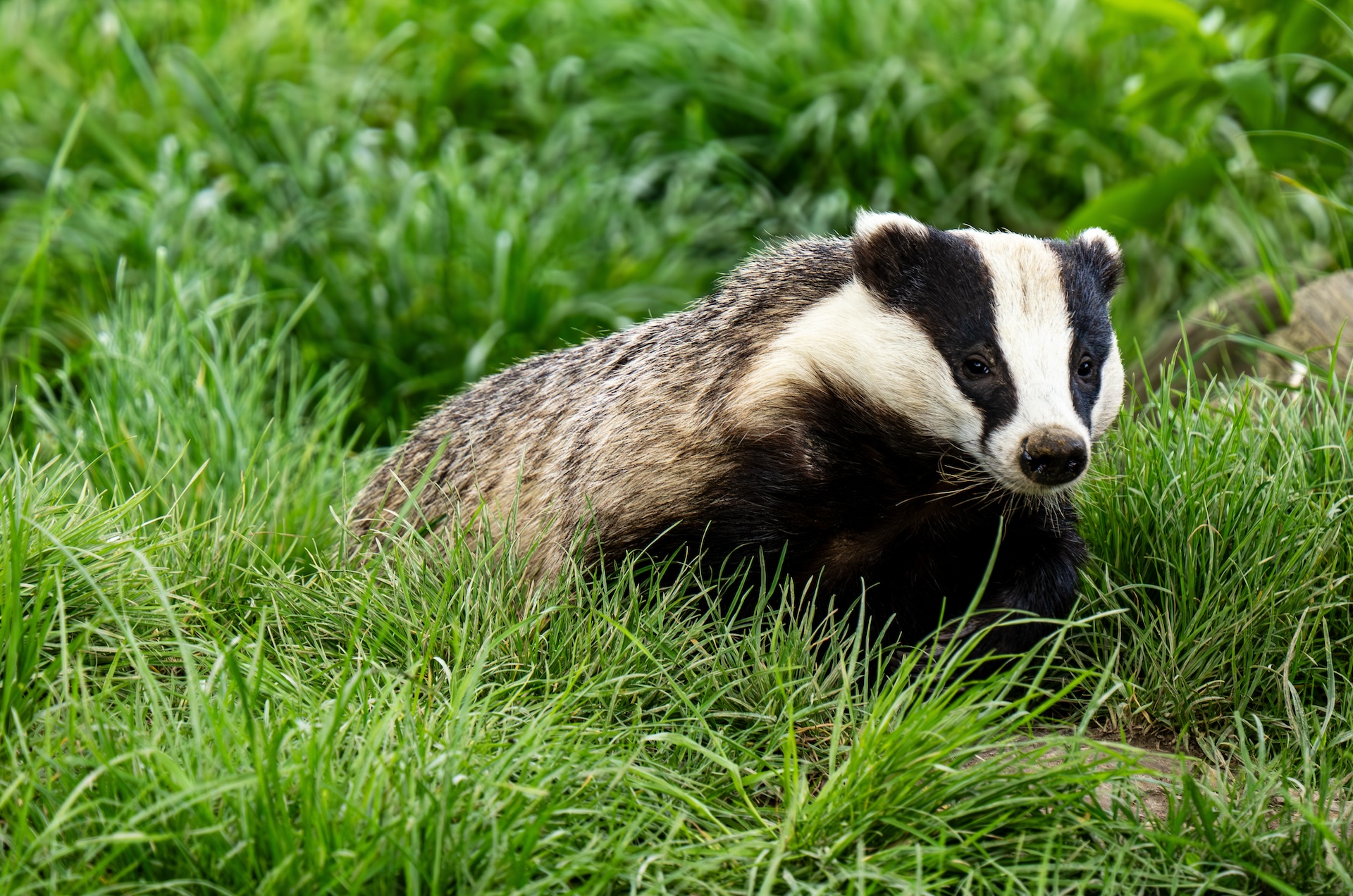
Eurasian badger
> Learn more about Eurasian badgers
Red Foxes
Adaptable, sly and born survivors, foxes are at the top of the woodland food chain. Look for these russet-red creatures with their pointed ears and bushy tails. They’re smaller than you might think, weighing in at just 11 to 17 pounds. The rural foxes are warier of humans than urban dwellers, and they’re crepuscular, so you’re more likely to see them during woodland walks at dawn and dusk.
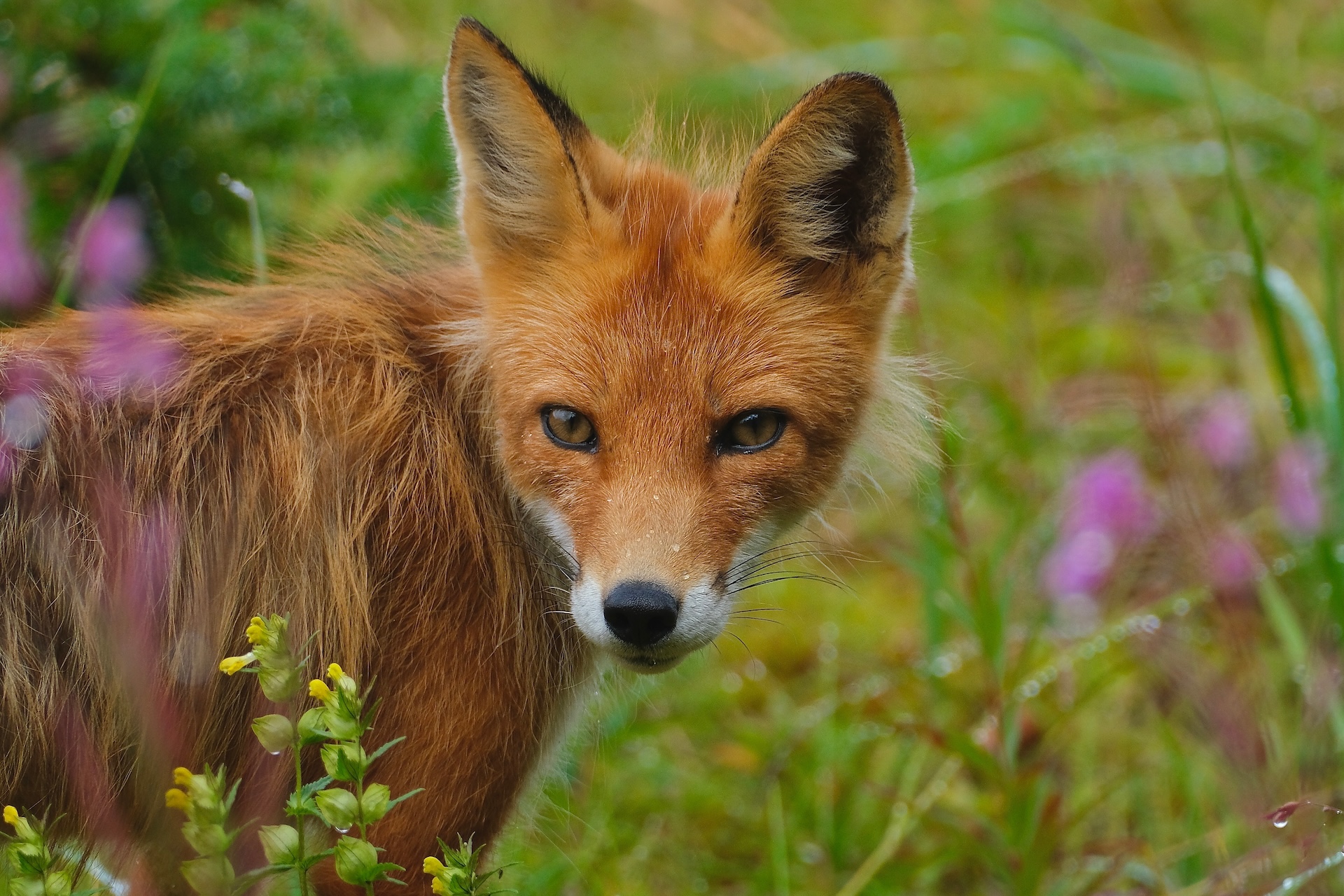
Red fox © Jen Kampmann
Great Horseshoe Bats
If you’re out and about looking for foxes at dawn or dusk, keep an eye out for the rare and highly agile greater horseshoe bat, the longest-lived bat in the United Kingdom. One of the region’s largest bats, they’re golden-brown with round wings, small black eyes and leaf-shaped pointed ears.
Hedgehogs
Who can resist these sweet, spiny mammals? Look for them along hedgerows and woodland edges, which these little “Tiggy-Winkles” (if you know your Beatrix Potter) seek out for food and shelter. Just know that they can be tough to spot, especially since they spend most of their lives asleep—typically around 14 to 18 hours a day!

Hedgehog
Hedgehogs were once common across Europe, but their numbers have declined by at least 30% over the past decade due to urban development, intensive farming and roads fragmenting their habitat. In 2024, the International Union for Conservation of Nature listed them as “near threatened” its red list. Help protect these adorable English critters with a symbolic hedgehog adoption through our conservation partner, World Wildlife Fund.
Deer (Roe, Red and Muntjac)
Among the most common animals in England, these deer species are all so nimble that you may only catch a fleeting glimpse as they bound through the trees or across a meadow. The roe deer is the most ubiquitous; look for its distinguishable white rump. The roe actually appears different depending on the time of year, with bright reddish-brown fur in the summer, fading to duller brown in the winter. Both sexes have the recognizable white rear as well as a white chin. The bucks have small antlers with up to three points, which are shed and regrown annually.
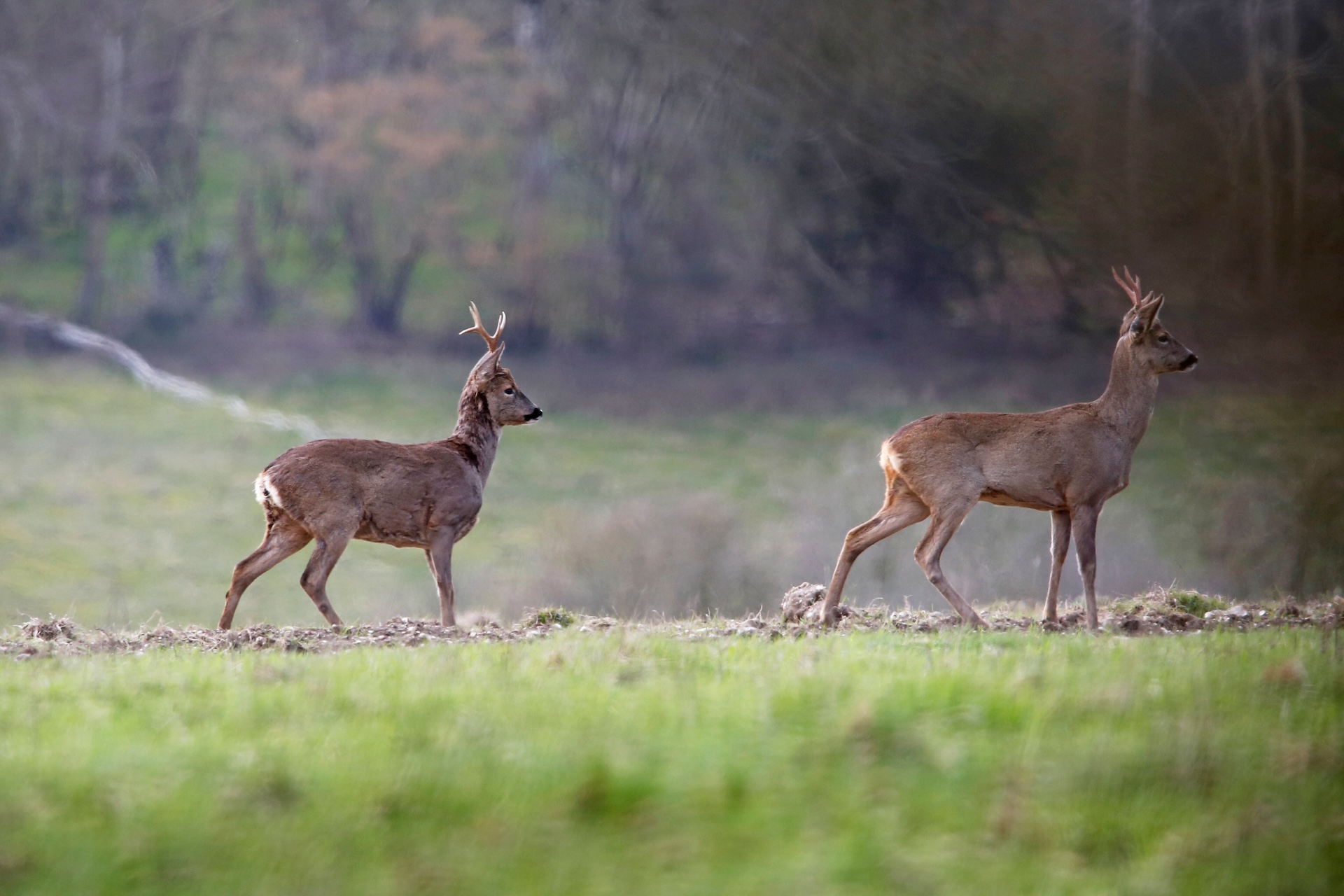
Roe deer
Raptors
The rolling hills and patchwork countryside of the Cotswolds host a variety of raptors. Peregrine falcons, renowned for their speed, nest on cliffs and church towers. Kestrels glide over fields in search of small mammals, while red kites soar gracefully in the thermals, their forked tails easily recognizable. Buzzards are also common, often seen circling high or perched on fence posts, scanning for prey.
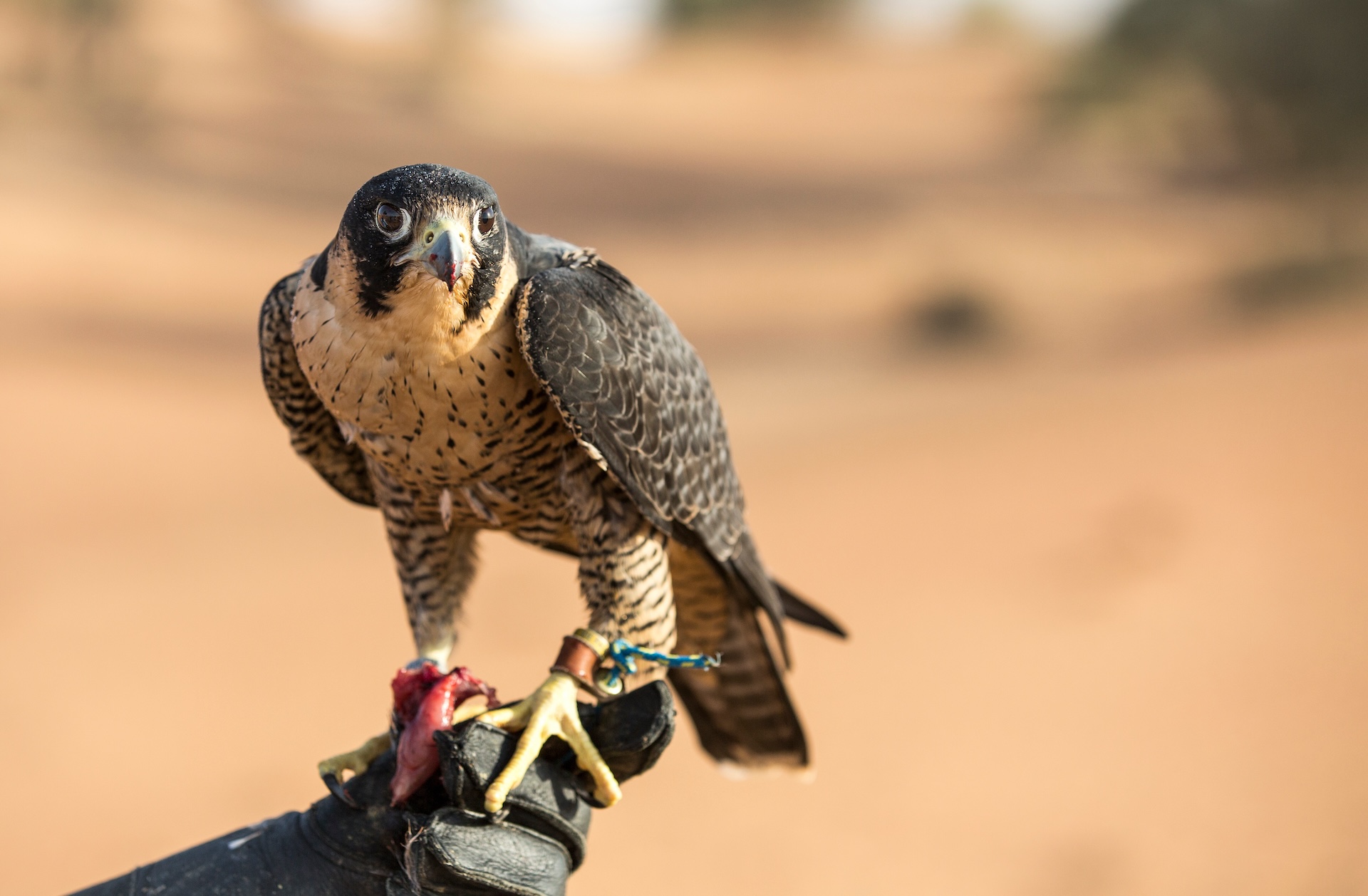
Guests on our Nat Hab Cotswolds adventure can watch a falconry demonstration featuring birds of prey like this Peregrine falcon
Where Will I See Wildlife in the Cotswolds?
Windrush Valley
One of the prettiest walking destinations in the Cotswolds, the Windrush Valley is home to the ruins of a 15th-century manor house along the River Windrush and the hamlets of Widford, Swinbrook and Asthall. Birders, especially, will enjoy exploring pastures full of grazing sheep and bucolic meadows brimming with wildflowers, where various bird species will dip and soar on the breeze. Look for the ring-necked duck, great egret and grey plover.
Chedworth
The hidden valley of Chedworth is a boon for wildlife enthusiasts. Numerous wildlife species inhabit the hedgerows—you may even spot a raptor or pheasant. Amongst the stands of poplar, chestnut, rowan and whitebeam trees, look for voles, pine martens, hazel dormice and fallow deer.
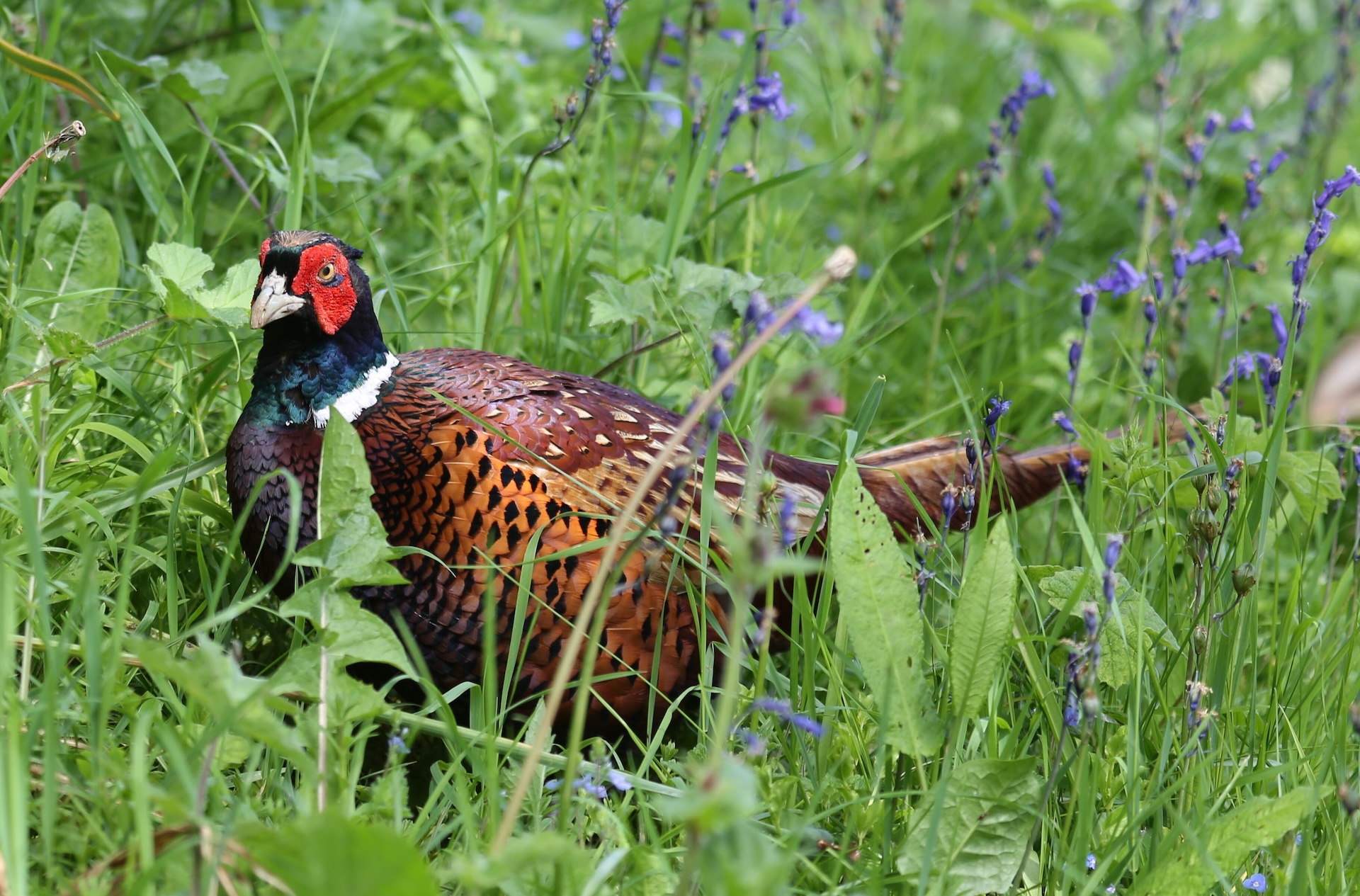
Ring-necked pheasant @ Lorelei Stierlen
Wytham Woods
Wytham Woods spans 1,000 acres and supports a remarkable diversity of wildlife, including more than 500 plant species and around 800 types of butterflies and moths. It also shelters a healthy population of badgers and three distinct deer species. The landscape features four key habitat types: ancient semi-natural woodland that has existed since the last Ice Age, secondary woodland established in the 1600s, mid-20th-century plantations, and areas of limestone grassland. Gifted to the University of Oxford in 1942, Wytham has become one of the most intensively studied natural environments on the planet. Long-term research includes more than six decades of bird monitoring, more than 30 years of badger studies, and 18 years of data on climate change.
Slimbridge Wetland Center
Located in Gloucestershire, Slimbridge Wetland Center is one of the UK’s largest reserves of its kind. Managed by the Wildfowl and Wetlands Trust, it plays a key role in protecting wetland habitats and wildlife. The WWT was founded by Sir Peter Scott—son of polar explorer Robert Falcon Scott—who also co-founded World Wildlife Fund and was knighted for his conservation work.
Slimbridge houses the world’s largest collection of captive waterfowl as part of a breeding program. Visitors can enjoy excellent birdwatching year-round, with hides offering views of swans, ducks, flamingos, cranes, and other wetland species.
Cotswolds Farms
As you go about seeking the most common wildlife in England, don’t overlook the farm animals of the Cotswolds. While not “wild,” these important creatures are a lifeline to the local agricultural lifestyle and getting to know them is the perfect intersection for nature-loving foodies. Farm-to-table fare is simply a fact of life, and less a culinary trend, here in the Cotswolds. At a local farm, take the time to learn about the cultivation of the surrounding land and meet the livestock that roams freely, including rare breeds of sheep, Gloucester and Aberdeen Angus cattle, turkeys, geese and chickens. Then, take a seat to enjoy the farm’s bounty, from salad greens and herbs to famous Single Gloucester Cheese to rare, farmed venison.
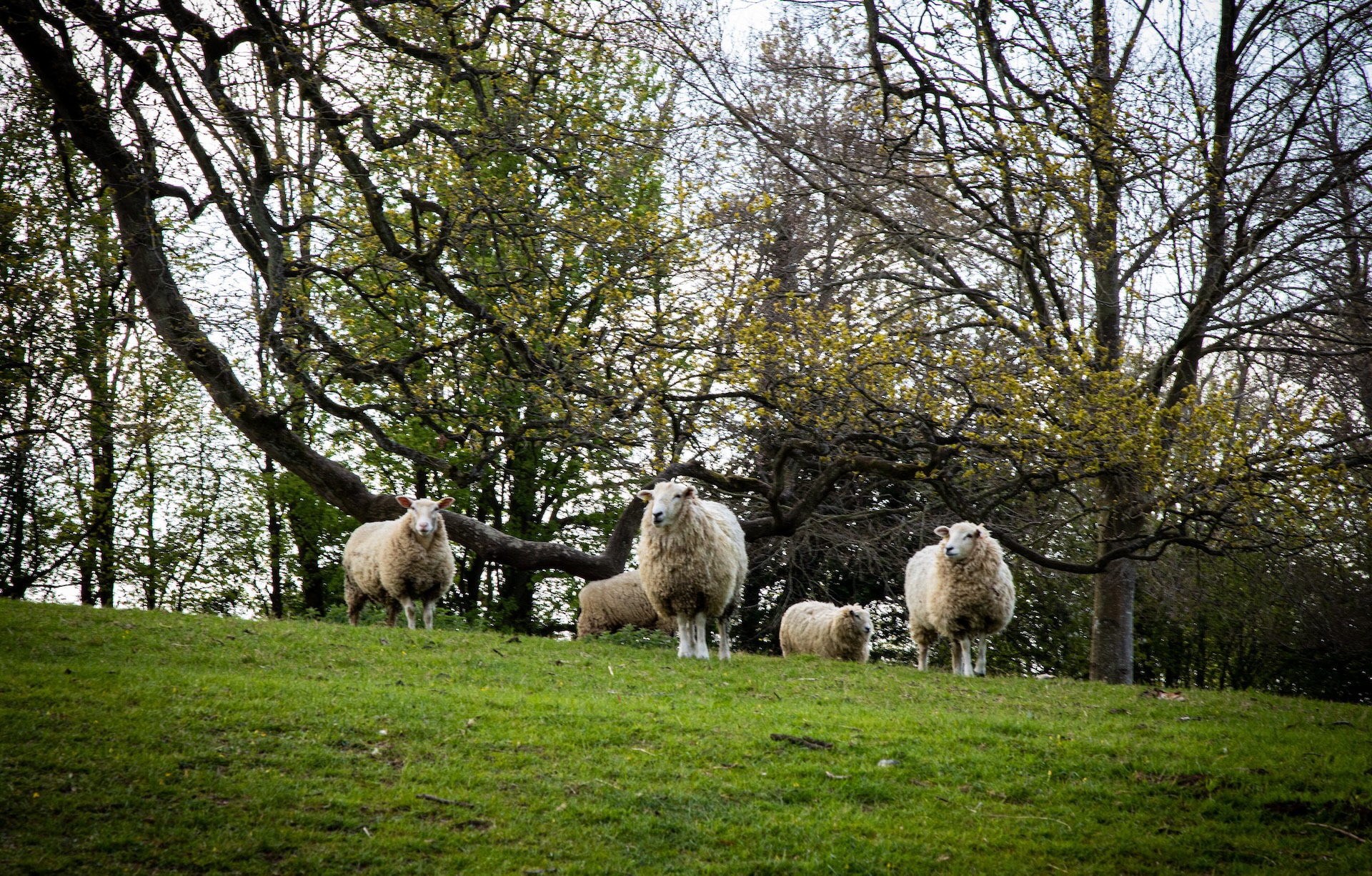
Sheep in the Cotswolds © Hollie Galloway
Think wildlife adventures have to be rugged and distant? Think again! The pastoral Cotswolds of England will surprise you with their plethora of unfettered wildlife in the United Kingdom’s most pristine natural settings. Explore our The Cotswolds: Exploring English Nature adventure.
The post English Wildlife: Intriguing Animals of Great Britain & The Cotswolds first appeared on Good Nature Travel Blog.